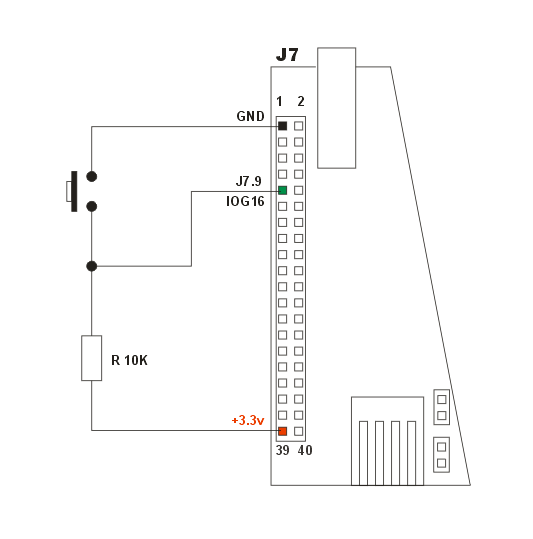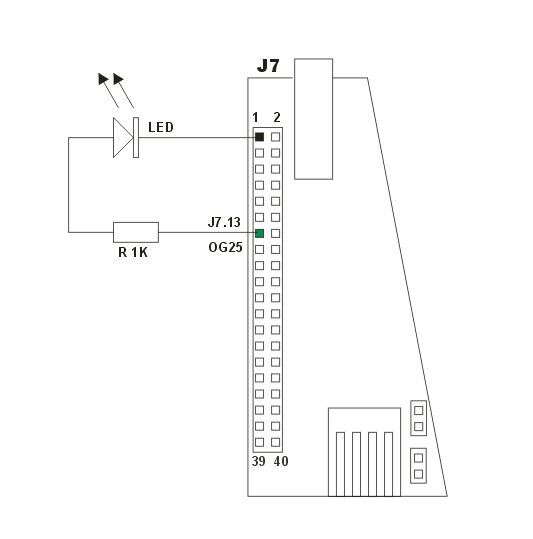How to compile MySQL C client API
This tutorial shows how to compile the MySQL 5.0.21 C client API for the FOX Board
MySQL (http://www.mysql.org) is one of the most used and faster SQL server in the world.MySQL C client API ( http://dev.mysql.com/doc/refman/5.0/en/c.html ) are a set of functions in C that enable your C applications to make SQL queries to a remote MySQL Server across a TCP/IP connection.
Using the MySQL C client API on the FOX Board it is possible to build a powerful gateway between external devices like lights, switches, display, etc. and the values stored in a SQL database.
An example is to generate an SQL "INSERT" every time a switch is pressed or show the results of a complex SQL "SELECT" directly on a LCD display to see the live values of total sales amounts from your ecommerce site.

How to compile step by step the MySQL C API on the FOX SDK
- Go to your SDK directory and type the usual:
$ source init_env
- Download the MySQL 5.0.21 sources from http://dev.mysql.com/downloads/mysql/5.0.html then type:
$ tar zxvf mysql-5.0.21.tar.gz $ cd mysql-5.0.21
- Download in this directory (mysql-5.0.21) the file mysql-5.0.21-fox.patch and type:
$ patch -p1 < mysql-5.0.21-fox.patch
- Open the file configure.fox and check if ROOTFS is set to the right SDK directory path. Then type:
$ autoconf $ sh configure.fox $ make
If autoconf doesn't run, check if the autotools are already installed on your Linux box.
- Download this simple C program:
#include "stdio.h" int main() { printf("%s\n", mysql_get_client_info()); return 0; } - and compile it with:
$ gcc-cris -mlinux -isystem /sdk_path/target/cris-axis-linux-gnu/ -lm -o mysqltest1 mysqltest1.c /sdk_path/mysql-5.0.21/libmysql/.libs/libmysqlclient.a /sdk_path/mysql-5.0.21/zlib/.libs/libz.a $ cris-strip mysqltest1
You will obtain a file of about 400Kb because the mysql library are linked statically.
- Copy the executable file on the FOX Board:
$ scp mysqltest1root@192.168.0.90:/var
- Login to the FOX Board and run the test:
[root@axis-00408c012220 /var]97# ./mysqltest1 5.0.21
If it works, you are ready to try a connection to a MySQL server.
Example 1 - An event logger
In this example we'll generate on the MySQL server one record each time we push an external switch. The record will have a timestamp to know when the switch was pressed.
A led will indicate if the new log record has generated on the MySQL server with a single blink. More blinks indicate an error condition.
Build the hardware
The external switch is connected to the FOX Board as shown on the following schematic diagram:

Schematic to connect an external switch |

Schematic to connect an external LED |
Create database and table on the MySQL server
Create a new database named logger on your MySQL server and a table named switch inside it. Create inside the table switch four fields: id, time, switchid and description.- id will containt the unique record id
- time will contain the switch pressed timestamp
- switchid will containt a string with a switch identifier
- description will containt a string with an event description
To create all of them you can use directly this SQL commands file:
CREATE TABLE IF NOT EXISTS `switch` ( `id` INT NOT NULL AUTO_INCREMENT , `time` TIMESTAMP NOT NULL , `switchid` VARCHAR( 20 ) NOT NULL , `description` VARCHAR( 50 ) NOT NULL , PRIMARY KEY ( `id` ) ) TYPE = MYISAM ;
Be shure that your MySQL server is enabled to receive external transactions. To do that modify this line on /etc&msql/my.cnf:
#skip-external-lockingin
skip-external-lockingBe shure also that you server can accept connection on default MySQL port 3306.
This is the source of logger.c:
#include "stdio.h"
#include "stdlib.h"
#include "unistd.h"
#include "sys/ioctl.h"
#include "fcntl.h"
#include "asm/etraxgpio.h"
#include "include/mysql.h"
#define def_host_name "192.168.0.100" // Put here the IP address of your MySQL server
#define def_user_name "fox" // Put here your MySQL user
#define def_password "fox" // Put here your MySQL password
#define def_db_name "logger"
MYSQL *conn;
int fd;
void led_on() {
int iomask;
iomask=1<<25;
ioctl(fd,_IO(ETRAXGPIO_IOCTYPE,IO_SETBITS),iomask);
}
void led_off() {
int iomask;
iomask=1<<25;
ioctl(fd,_IO(ETRAXGPIO_IOCTYPE,IO_CLRBITS),iomask);
}
void led_blink(int number) {
int i;
for (i=0;i<number;i++)
{
led_on();
usleep(100000);
led_off();
usleep(100000);
}
}
int get_switch() {
int iomask;
int value;
iomask=1<<16;
value=ioctl(fd, _IO(ETRAXGPIO_IOCTYPE, IO_READBITS));
if ((value&iomask)==0) return 1;
else return 0;
}
int main (int argc, char *argv[])
{
if ((fd = open("/dev/gpiog", O_RDWR))<0) {
printf("Open error on /dev/gpiog\n");
exit(0);
}
conn = mysql_init (NULL);
if (conn == NULL)
{
fprintf (stderr, "mysql_init() failed (probably out of memory)\n");
led_blink(6);
exit (1);
}
if (mysql_real_connect (
conn, /* pointer to connection handler */
def_host_name, /* host to connect to */
def_user_name, /* user name */
def_password, /* password */
def_db_name, /* database to use */
0, /* port (use default) */
NULL, /* socket (use default) */
0) /* flags (none) */
== NULL)
{
fprintf (stderr, "mysql_real_connect() failed:\n");
fprintf (stderr, "Error %u (%s)\n", mysql_errno (conn), mysql_error (conn));
led_blink(5);
exit (1);
}
while (1) {
if (get_switch()) {
led_on();
if (mysql_query (conn, "INSERT INTO switch (switchid,description) VALUES ('IOG16','Switch pressed')") != 0)
{
printf("INSERT statement failed\n");
led_blink(4);
exit (1);
}
else
{
printf ("INSERT statement succeeded: %lu rows affected\n",(unsigned long) mysql_affected_rows (conn));
}
led_blink(1);
while(get_switch());
}
}
mysql_close (conn);
close(fd);
exit (0);
}
This is the result thet we obtain in the switch table:
mysql> select * from switch; +----+----------------+----------+----------------+ | id | time | switchid | description | +----+----------------+----------+----------------+ | 1 | 20060530074807 | IOG16 | Switch pressed | | 2 | 20060530074809 | IOG16 | Switch pressed | | 3 | 20060530074811 | IOG16 | Switch pressed | | 4 | 20060530074812 | IOG16 | Switch pressed | | 5 | 20060530074813 | IOG16 | Switch pressed | | 6 | 20060530074813 | IOG16 | Switch pressed | | 7 | 20060530074814 | IOG16 | Switch pressed | | 8 | 20060530074815 | IOG16 | Switch pressed | | 9 | 20060530074815 | IOG16 | Switch pressed | +----+----------------+----------+----------------+ 9 rows in set (0.00 sec)
Related links
- MySQL C client API documentation
- Tutorial: Using the MySQL client library to write your own programs by Paul Dubois





